People
The Rubell Effect: How the Miami Couple Brought the Midas Touch to Generations of Young Artists
As Don and Mera Rubell prepare to open their newly expanded museum in Miami's Allapattah neighborhood, we examine their formidable legacy.
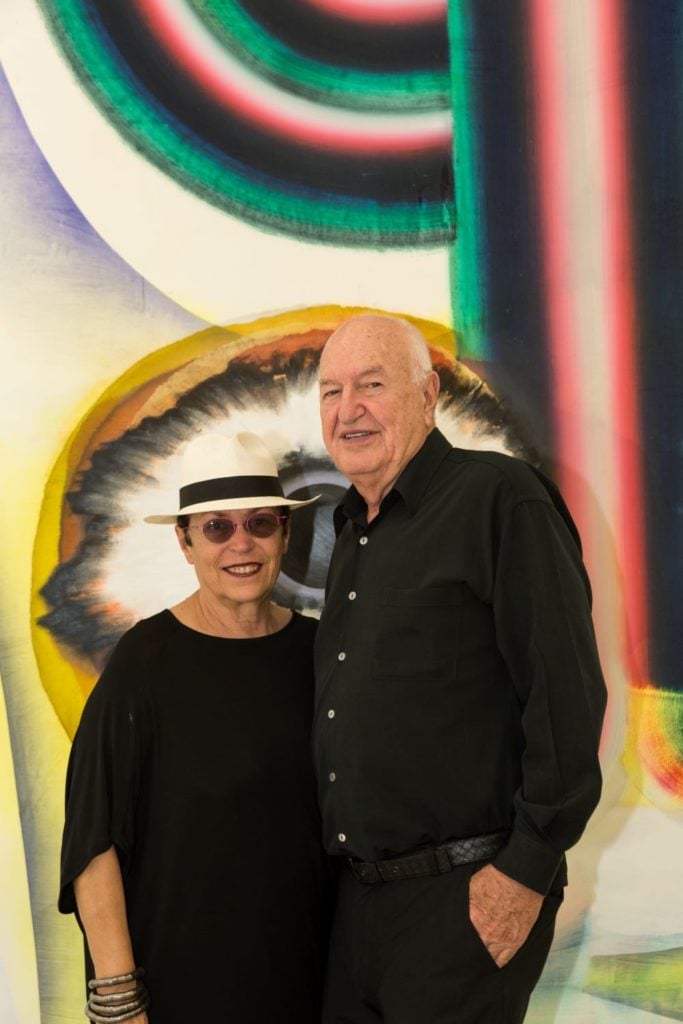
As Don and Mera Rubell prepare to open their newly expanded museum in Miami's Allapattah neighborhood, we examine their formidable legacy.

Janelle Zara

The story of Don and Mera Rubell, two of the most influential and perhaps most beloved contemporary art collectors of our time, typically unfolds with a rote sequence of numbers: The year they married and started collecting (1964); the modest budget they first devoted to buying art ($25, a quarter out of Mera’s weekly teacher’s salary); and the year they opened the Rubell Family Collection to present their holdings to the public (1993). By their latest tally, the Rubells own about 7,200 works by more than 1,000 artists, and that number grows by the hundreds every year.
New numbers join the sequence this week as Don and Mera say goodbye to Wynwood, their Miami neighborhood of 26 years, and say hello to their collection’s new home in the adjacent Allapattah. On Wednesday, the Rubell Family Collection officially reopens there under a new roof and a new name: the Rubell Museum, a 100,000-square-foot campus of 40 galleries, a library, and a restaurant in a former food processing complex refurbished by Selldorf Architects.
“Everything is a long story,” Mera tells Artnet News over the phone, but the short explanation for the move is that the collection that she and Don amassed had outgrown their old space, while Wynwood had outgrown their budget. The formerly high-crime neighborhood where they bought a 40,000-square-foot former DEA warehouse for $450,000 in 1993 is now home to boutique gyms and cocktail bars. That gentrification is due, at least in part, to the Rubells’ own impact.
“Whether we like it or not, wherever art goes, it changes neighborhoods,” Mera says. And, admittedly, “we’re benefitting.” In 2017, the Rubells took out a $16 million mortgage against the value of their warehouse combined with their other nearby properties. The couple still lives in the same home they’ve accessed through the original museum’s library, but they eventually plan to sell. “The appreciated value of that building can more than pay for this building and the renovation,” says Mera, “so that’s very exciting.”
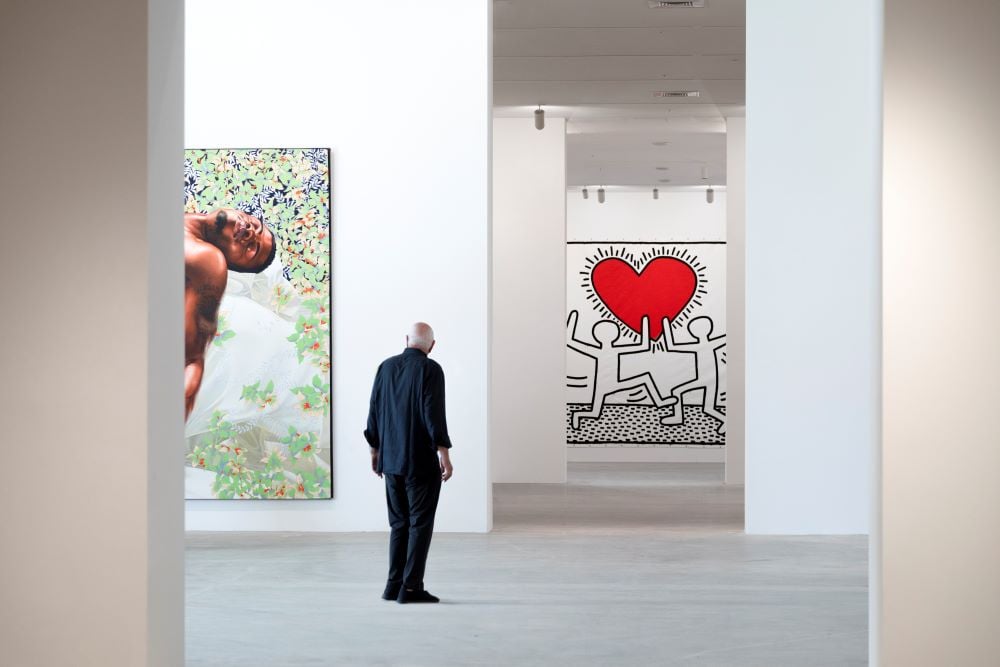
Don Rubell in front of work by Kehinde Wiley and Keith Haring at the Rubell Museum. Image courtesy of the Rubell Museum.
The Rubells’ real estate windfall in Wynwood echoes the shrewd investments they’ve made in art collecting—and in Miami, the two industries are often intertwined. Over the course of more than 50 years, Don and Mera have built a reputation for investing in emerging artists deeply and cheaply, then watching the value of their holdings ascend beyond their range as the masses eventually caught on. The prescient acquisitions in the Rubell Museum’s inaugural exhibition are a highlight reel of their ability to spot greatness in its nascent stages: a 1979 Jeff Koons vacuum, early-’90s Catherine Opie portraits, a 1999 woodcut by Kerry James Marshall.
“There is no such thing as a great young artist,” Don once said. “There are only artists with potential.”
For longtime friend and dealer Jeffrey Deitch, the couple represents a bygone, albeit idealized era of collecting, “when buying a work was such a significant endorsement,” he says. “It wasn’t like today, where an artist comes on the scene and within six months, there’s a waiting list of 200 people.”
Never having hired an art advisor, Don and Mera, respectively a former gynecologist and teacher, constantly seek new talents on their own, visiting young unknowns in their studios and spending the time to understand both the artist and the work. “[Mera]’s like Howard Stern,” says gallerist Michele Maccarone, who sold the Rubells works by Nate Lowman and Trulee Hall before either had their first solo shows. “She’s somebody that’s able to do this phenomenal interview and get everything out of you. Moving forward, I don’t know if there’s a real collector couple or collector that has that kind of passion.”
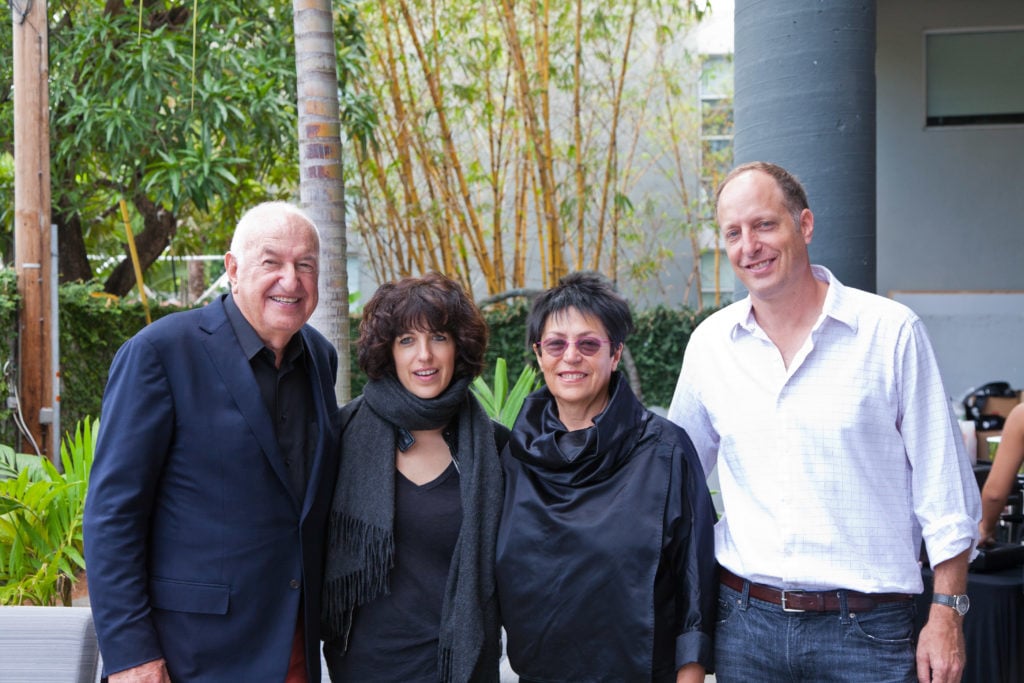
Left to right: Don, Jennifer, Mera and Jason Rubell. Photo courtesy of the Rubell Family Collection.
Despite the Rubells’ being earnest, diligent collectors, speculative frenzies tend to form in their wake. They’re euphemistically described as “instilling confidence” in a young artist’s market, while their role as bellwether has cut a path for sheep trying to emulate their success at unnatural speeds—the newly minted collector who is flipping works based on their latest acquisitions, as well as the overzealous developer hoping to gentrify working-class Allapattah. For better or worse, as the art world hits record size and speed, the Rubells’ influence now has greater repercussions than ever.
According to Mera, the Rubells bought their former DEA warehouse looking to consolidate their collection, not to show it. At the time, maintaining their constellation of storage units in New York “was costing us a lot of money,” she recalls, “and it was literally like having your children in an orphanage.” Their son Jason, who had just exhibited his own collection as his senior thesis at Duke, encouraged them to open a private museum, and today, each acquisition requires the unanimous approval of all three.
Despite the Rubells’ trove of early blue-chip works, collecting is not the family business. The Rubell Museum functions as a nonprofit, and Don once estimated that they had only sold a total of .4 percent of their holdings ever. The family income comes from a modest real estate portfolio that includes hotels in South Beach, Baltimore, and Washington, DC.
They’re easily outspent by wealthier buyers; Mera names George Condo, whose work they first collected in the ’80s, as impossibly out of range today. But much like their Wynwood properties assured their recent $16 million loan, the content of their collection wields tremendous bargaining power: The Rubells enjoy the standard institutional discount of 20 percent, sometimes more, as they buy early and in bulk, sometimes taking sweeping shares of emerging artists’ markets before they’ve had their first gallery shows. They still sometimes negotiate payment plans—five monthly installments for 35 works from an artist they began collecting last year, for example—because artists and dealers, eager to share in the prestige the Rubell Collection has accrued, are willing to comply.
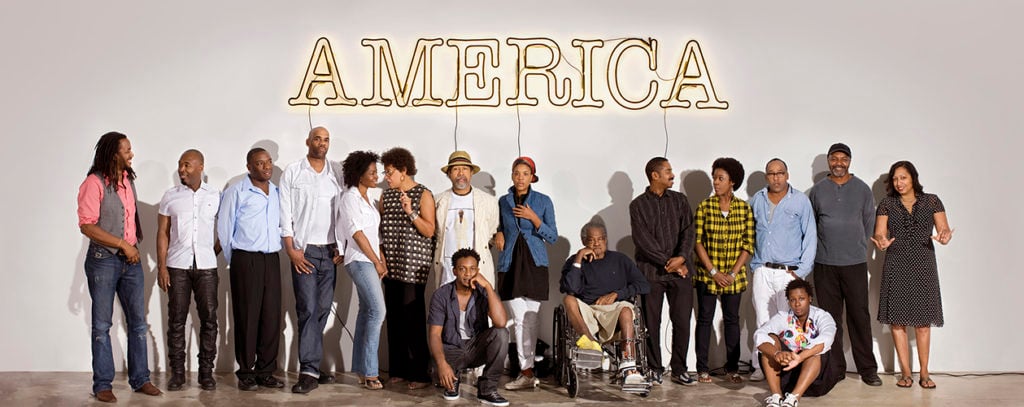
30 Americans Artists, December 5, 2008. Left to right: Rashid Johnson, Nick Cave, Kalup Linzy, Jeff Sonhouse, Lorna Simpson, Carrie Mae Weems, Barkley L. Hendricks, Hank Willis Thomas (front row), Xaviera Simmons, Purvis Young, John Bankston, Nina Chanel Abney, Henry Taylor, Mickalene Thomas (front row), Kerry James Marshall, and Shinique Smith. Photo: Kwaku Alston. Courtesy of Rubell Family Collection
Fellow collectors want in, too. “People follow them around fairs—they want to see who’s next,” says artist Dan Levenson, who likens being the subject of the Rubells’ attention, however brief, to the Midas touch. On the last day of Art Basel Miami Beach in 2014, Don placed a hold on one of Levenson’s works at Susanne Vielmetter’s booth, which suddenly generated a waiting list. “Somehow word got out that the Rubells were interested,” Vielmetter recalls, “and then we had a second, a third, and a fourth hold.” At the time, “I had had very little exposure in commercial galleries,” Levenson says, “so it proved to a lot of people that my work was collectible. It changed by life.”
The Rubell Family Collection was one of the first private museums of contemporary art in America, a phenomenon that’s been growing more prominent around the world, even as public museum funding is on the decline. In Miami especially, where private museums abound, museum leaders expressed fears of such institutions cannibalizing opportunities for public institutions. “We’re all looking at the same piles of dollars, we’re all looking at the same corporate sponsors,” Silvia Karman Cubiñá, the executive director of the Bass, said in 2017.
Cubiñá does, however, credit the Rubells and other private collection owners with building the bedrock of Miami’s cultural landscape. “The private collectors were the first ones to make contact with Art Basel,” which came to Miami Beach in 2002, she says. “It really creates a richer ecosystem for all of us,” she adds. “We finally have an entire generation of people has grown up with culture happening in their city.”
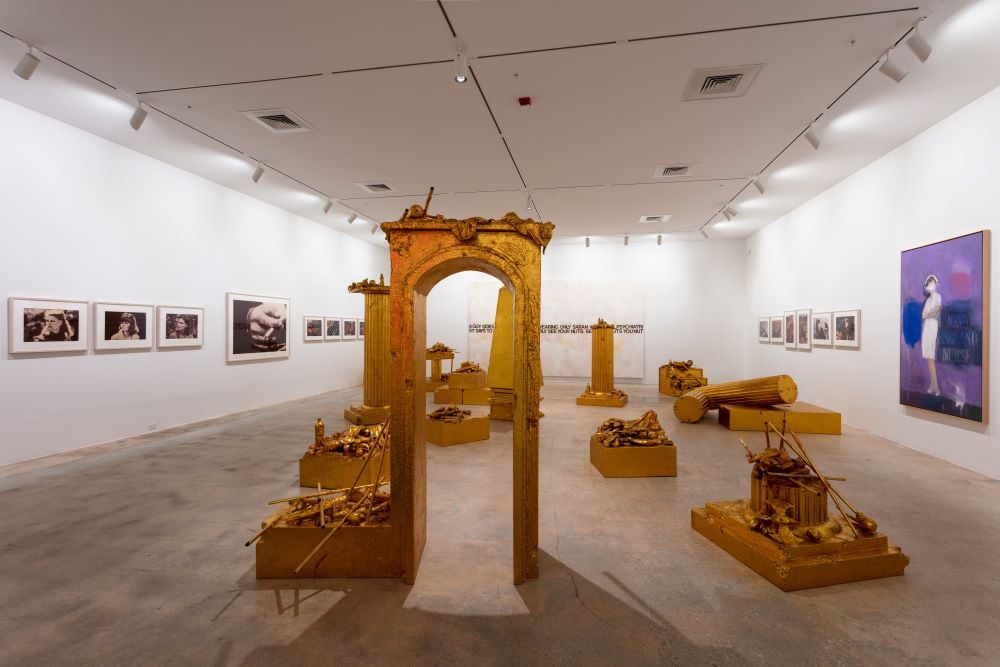
Installation view of John Miller, A Refusal to Accept Limits (2007) at the Rubell Museum. Photo by Chi Lam. Image courtesy of the Rubell Museum.
Opening a private museum offers myriad benefits to the private collector, too. There are the tax breaks, for one thing. The ordinary costs of collecting—the purchasing, shipping, and storage of art—are all tax deductible. In 2015, the Senate Finance Committee’s inquiry into whether the benefits for museum owners like the Rubells, Eli Broad, and Peter Brant outweighed the benefits to the public proved to be largely inconclusive. “I think it had a sobering effect on many of these entities, reminding them of their absolute obligation to be creating a public benefit,” Stephen Urice, a professor at the University of Miami School of Law, says of the inquiry. (Incidentally, his statement echoed a line from a recent Rubell press release, which reads: “The Rubell Family Collection has formally been renamed the Rubell Museum to emphasize its public mission.”)
Arguably the greatest advantage of a private museum, however, is the ability to maintain total control over the acquisition and display of art, plus the outsize power it affords individuals to steer the attention of the art world. A residency or solo exhibition with the Rubells comes with the exposure and validation of a traditional museum—and often magazine profiles, new gallery representation, and solo booths at the coinciding Miami fairs, even for artists who are only recently out of school. In 2017, the Rubells bought 22 works from then-27-year-old artist Allison Zuckerman and offered her a solo show and residency in their space. Before that, according to her gallerist Marc Wehby, “She had never sold anything. Ever.”
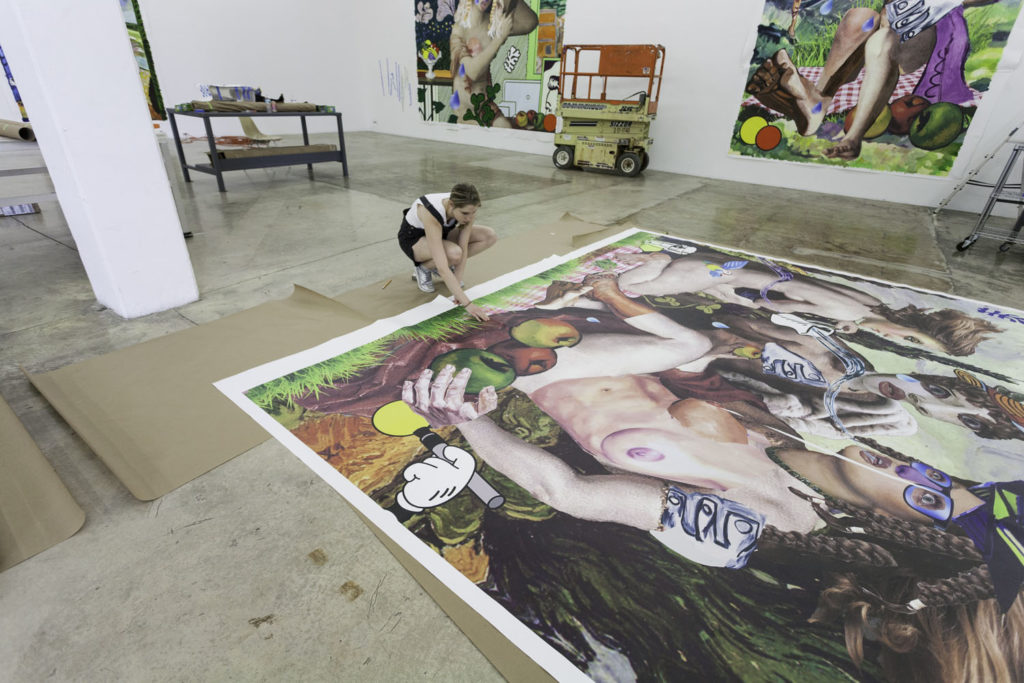
Allison Zuckerman at the Rubell Family Collection in the summer of 2017. Courtesy of Kravets Wehby Gallery and the Rubell Family Collection.
Without the delays of museum bureaucracy, private museums have a way of fast-tracking prominence in the art world at ungainly speeds. Following Oscar Murillo’s 2012 residency and solo exhibition at the Rubell Family Collection, works by the artist (who was also 27 at the time) racked up an astonishing $4.9 million in auction sales the following year, and representation by mega-gallery David Zwirner followed the year after that.
All the while, however, art press derided his paintings and installations as “obvious and generic” and “student work,” and the artist himself became the poster child of the Zombie Formalism Apocalypse—a symbol of a dynamic in which hollow market plays push an artist’s career into the stratosphere before they can be vetted or validated by critics and museums. “Almost any artist who gets that much attention so early on in his career is destined for failure,” art advisor Allan Schwartzman’s said in an article about Murillo in 2014. “The glare is simply too bright for them to evolve.”
Mera is quick to come to Murillo’s defense. “Oscar’s a very talented artist,” she says. “He went from absolute poverty to really having a tremendous successful career, and I want to celebrate that.”
“There’s just a million reasons why people attack you for becoming overly successful,” she adds. “I remember the first time a Marlene Dumas painting sold for $3 million, and everybody was so antagonistic towards her. Marlene Dumas! But then they come around.”
The Rubell Museum’s new home is in Allapattah, Wynwood’s neighbor across Interstate 95, where the family already owned property. In 1993, the same year that the Rubell Family Collection opened, it’s also where Trujillo & Sons Quality Food bought a cluster of warehouses for $600,000 for their own family business of food distribution. (“You’ve heard of cutting drugs, but this was about cutting beans!” Mera quips.) The Rubells, taken by its 80-by-80 square feet of column-free space, bought the Trujillos’ space in 2015 for $4 million. “It was remarkably inexpensive, especially compared to Wynwood,” Mera says. In 2016, they also bought the property across the street for $8.4 million.
The transformation of Wynwood was a slow burn that took place over the course of decades, thanks to other collector-developers like Martin Z. Margulies of the Margulies Collection and Tony Goldman, creator of the highly Instagrammable Wynwood Walls. While the growth of Allappattah had remained relatively stable during this time, its real estate has recently caught fire. From 2014 to 2018, according to the Biscayne Times, land prices in Allapattah rose from $58 per square foot to $275, stoking fears of gentrification as major Miami developers started making sweeping purchases of area properties. One notable new project is El Espacio 23, a new private museum for Jorge Pérez, the developer-collector namesake of the Pérez Art Museum Miami.
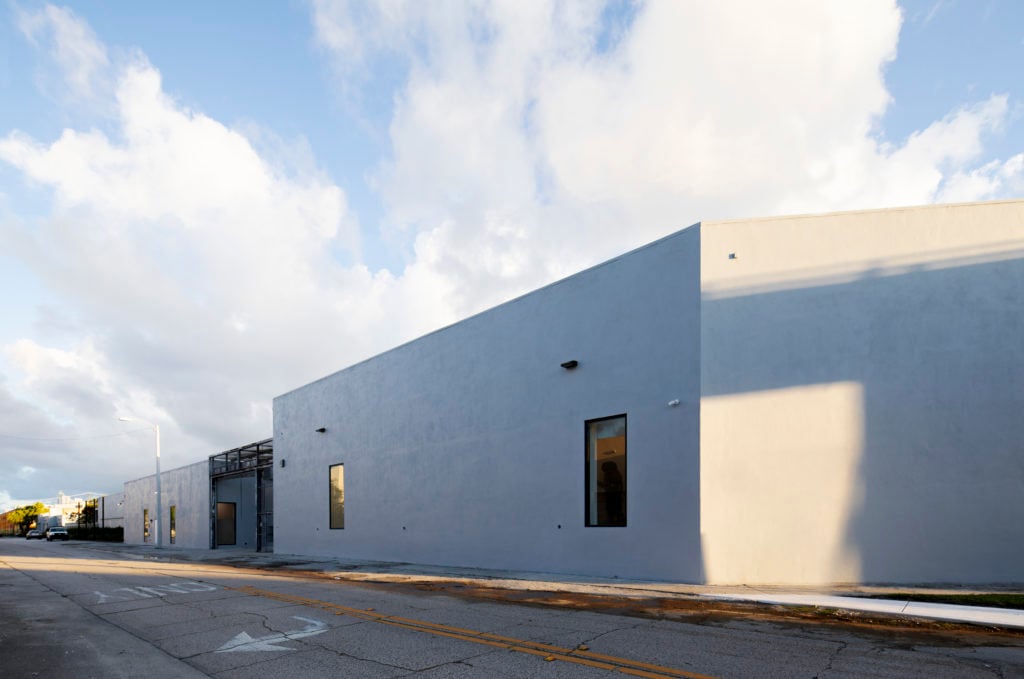
Exterior view of the Rubell Museum. Photo: Nicholas Venezia, courtesy of Selldorf Architects.
Interest in Allapattah had been growing organically due to many factors, says Carlos Fausto Miranda, the realtor who brokered the Rubells’ purchase—recent rezoning laws, its proximity to the airport, its higher elevation in the face of rising sea levels. But the interest of tastemakers like the Rubells and developer Robert Wennett, who hired Danish starchitect Bjarke Ingels to convert a produce market into a 1.4 million-square-foot mixed-use development, had a big impact, too.
“While they were not alone, the Rubells certainly did put the area on the map for some people who had never interacted with it before,” he says. “They’re pioneers. They are visionary people, absolutely.”
Jeffrey Deitch places the Rubells in the same historic league as legendary collectors Gertrude Stein and John Quinn. “The number of collectors who create an important, coherent statement, who have total engagement with the work, and who make a major contribution to the history of art—it’s tiny,” he says. And in the ’80s, when Mera would make a giant vat of pasta at their Madison Avenue apartment after Whitney Biennial openings, “it showed a kind of engagement and generosity that was really unique. The entire art world was invited, and in those days, the entire art world could fit in their living room.”
The art world remained small even when the Rubells left New York for Miami in 1990: there were no private museums and no art fairs, and Wynwood was still an expanse of derelict warehouses. Since then, the Rubells’ biennial spaghetti dinner has evolved in tandem with the art world, and now accommodates the throngs of fairgoers who descend on Miami for the December fairs. This week, the Rubells expect to host thousands during their annual public breakfast, which features edible work created by their daughter, artist Jennifer Rubell.
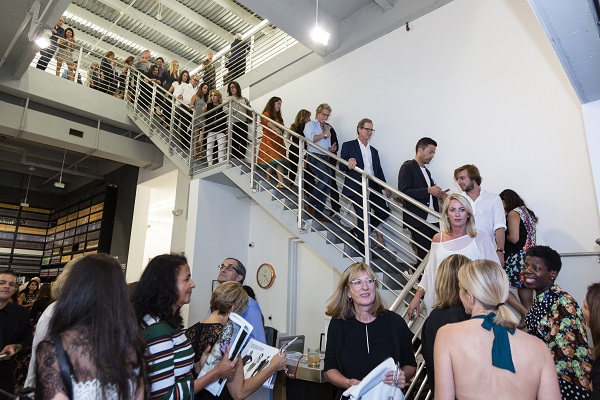
Opening party, NO MAN’S LAND, Rubell Family Collection, Miami, Dec 2, 2015.
Photo: © Chi Lam.
Mera doesn’t question anyone’s motives for coming into the fray. “Yeah, some people come to the art strictly for the appreciation of value,” she says. “Does it put more pressure on us to collect early? Yes, that’s true, but it represents a big opportunity for the artist. I think like everything else, things change, and you have to adapt to it.”
For Mera, Don, and Jason, curating the inaugural shows across the Rubell Museum’s new galleries has been an important opportunity to look back on an illustrious family history. “This is a story of collecting, you know, and what we’re trying to do is bring that memory to bear,” Mera says. “These are not just names,” she adds, vividly recounting her first encounters with works by Jeff Koons, Robert Gober, Philip Taaffe. “These are intense relationships that go back so many years, and it’s not enough to just know the artist and to own the work, but to place it so that in some small way, our witnessing of that work in its original context brings the installation meaning.”
As she and Don continue business as usual, collecting remains a pricey labor of love. “Most of the time, we can’t really afford to keep going,” she says, “but we try to go as long as we can.”